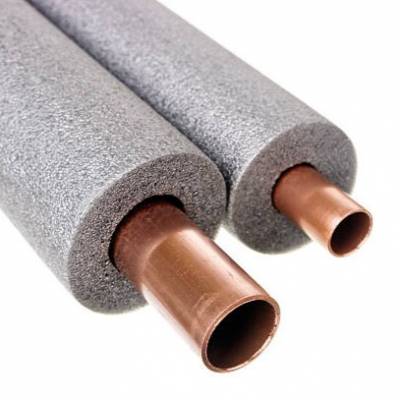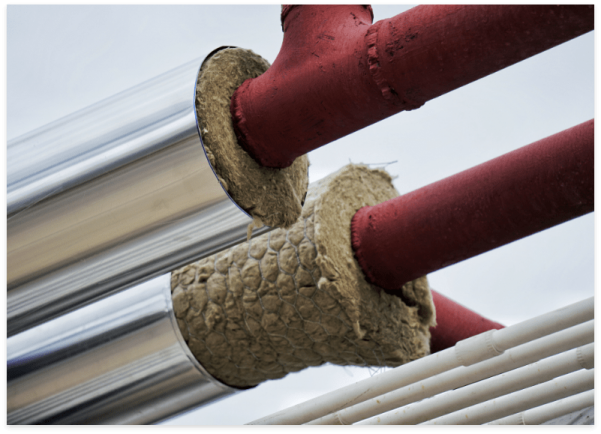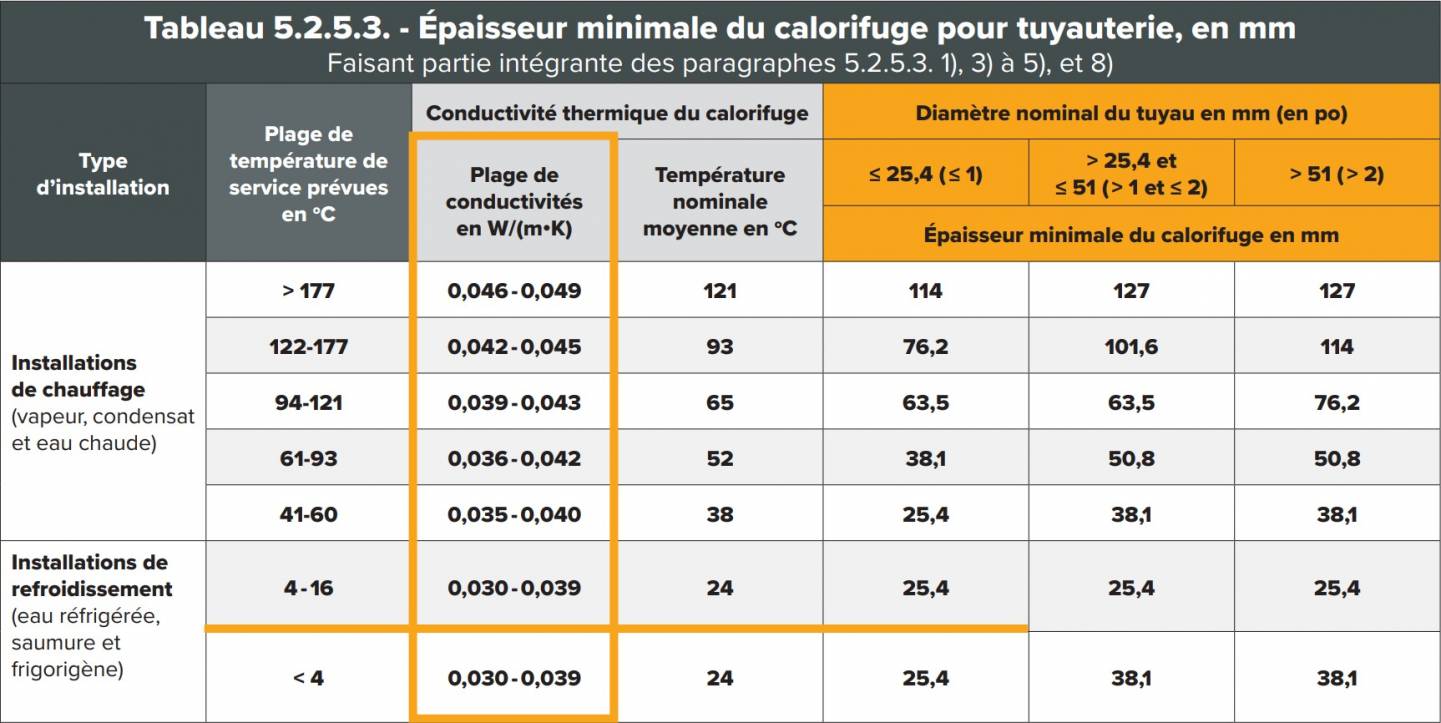
Should all the pipes in a building be insulated, whether the circulating water is hot or cold? The answer is both simple and complex. But first, let understand what it is.
Explanation of the process: Pipe insulation consists of wrapping the pipes that carry hot or cold liquid, which need to maintain their temperature, with a sheath to thermally isolate them from their surrounding environment. Typically, these sheaths are made of mineral fibers or even plastic (elastomer).

Figure 1 : Example of insulation
Check and analyze the current condition of the pipes and their immediate surroundings.
There are significant advantages to pipe insulation:
However, there are some disadvantages to pipe insulation:
The size of the insulation depends on several factors, including:

Figure 2: Table on the minimal thickness of the insulation
Note: Table only exists in French version.
This table, taken from a document published by the Association de la construction du Québec, brings together all the factors stated above and allows for the determination of the minimum thickness and the insulation material to be used to adequately maintain the liquid's temperature. While the thickness is determined using the table, the material is determined by calculating the necessary thermal resistance factor.
For example, for a pipe with a nominal diameter of 25.4 mm or less, used in a heating system with a temperature range of 122 to 177°C, the insulation material chosen should have a thermal conductivity between 0.042 and 0.045 W/(m*K). The thermal resistance factor is calculated by dividing the conductivity by the nominal diameter, i.e., conductivity/nominal diameter. In this case, the thermal resistance factor should be between 0.56 and 0.60 Rsi.
In residential or commercial buildings, when insulating heating pipes as well as other pipes carrying fluids at a constant temperature, the use of pipe insulation should be considered, especially if the pipes travel long distances in varying environments.
Prabat. Calorifugeage. https://www.prabat.fr/nos-solutions/calorifugeage/
ACQ.org. Efficacité énergétique. https://www.acq.org/wp-content/uploads/2021/08/residentiel-fiches-techniques-efficacite-energetique-fiche5.pdf
Publications-cnrc.canada.ca. Code national de l’énergie pour les bâtiments du Québec 2017. https://publications-cnrc.canada.ca/fra/voir/td/?id=25682fbd-0aa6-4e4d-8f0d-1e8d3c0eb43c&dsl=fr . Tableau 5.2.5.3. p.153
Copropriété. Hellio. Définition du calorifugeage et avantages en rénovation énergétique. https://copropriete.hellio.com/blog/renovation-energetique/definition-calorifugeage
Pacte-énergie-solidarité. Tout savoir sur le calorifugeage. https://www.pacte-energie-solidarite.fr/travaux-energetique/isolation-thermique/calorifugeage
We use cookies to understand how you use our site and to improve your experience. This includes personalizing content and advertising. By continuing to use our site, you accept our use of cookies, terms and conditions, privacy policy. Confused? Send us an e-mail.
I acceptWe use cookies
Respecting your privacy matters to us. We use cookies to personalize our content and facilitate your digital experience. Some cookies may be collected with your consent.
Essential
Essential cookies help make a website usable by enabling basic functions such as page navigation and access to secure areas of the website. The website cannot function properly without these cookies.
Performance
These cookies enable us to analyze navigation on our sites and improve their operation.
Customization
Preference cookies enable a website to remember information that modifies the behavior or appearance of the site, such as your preferred language or the region you are in.
Targeted advertising
These cookies help us limit the number of times you see an advertisement, personalize our offers and services according to your centers of interest, measure the effectiveness of an advertising campaign, and so on. They may be shared with our partners.
We use cookies
Respecting your privacy matters to us. We use cookies to personalize our content and facilitate your digital experience. Some cookies may be collected with your consent.